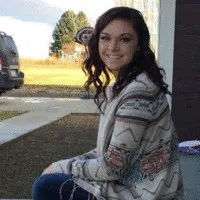SOLIDWORKS Simulation Cyclic Symmetry Error Cause and Fix
Cyclic Symmetry is a handy fixture in SOLIDWORKS Simulation that is often used to save on resources and calculation time. However, an error can occur when working with cyclic symmetry on turn geometry. The error message states, “Source projection at Cyclic symmetry. Pair Cyclic Symmetry-1 is not fully enclosed within the target”.

There are a couple of issues that will cause this error:
- The mesh is too coarse on the reference faces
- The two reference faces in the cyclic symmetry fixture are not perfectly symmetrical
Option 1 Solution
If you have found that the reference faces in your model are perfectly symmetrical, you are likely running into issue 1: the mesh on those faces is too coarse. To resolve this, define a mesh control and refine it locally on those faces.
Option 2 Solutions
For this issue, two solutions can be used to resolve the error.
- Recreating the geometry so the faces are perfectly symmetrical
- Using 2D simplification

To demonstrate these, let's use the example of a fastener and a bolt.
The study is run on a 30º section of the original model. For this study, a couple of cyclic symmetries have been added, one for the fastener and another for the bolt. After everything is set up, when about to run the study, is when the error appears. This is occurring because the reference faces are not perfectly symmetrical due to the spiral threads.

Solution 1 – Recreating Geometry
For this example, let's start by creating a sketch of one of the sides of the fastener, and revolve the shape 360º to represent the fastener and its threads.

From there, we'll cut away everything but a 30º section of the model. Now, there are no longer angled threads, and each of the reference faces is perfectly symmetrical.
Note: If you find that your model cannot have identical cross-sectional faces with the geometry you are working with, then you may need to cut a larger revolved portion of the turn part or consider just using the whole model for the study.
Solution 2 – 2D Simplification
The other solution that can be used is 2D simplification. However, if you choose to do this, you will have to make some important assumptions, as this tool also assumes the revolve geometry is consistent in its profile along the entire revolved geometry.
To do this, when starting the study, select the Use 2D Simplification option under Static. Our blog, Utilizing 2D Simplification in SOLIDWORKS Simulation, covers how this.

Want to learn more? Take a look at some other GoEngineer articles related to SOLIDWORKS Simulation below. Additionally, join the GoEngineer Community to participate in discussions, create forum posts, and answer questions from other SOLIDWORKS users.
Related Articles
SOLIDWORKS Simulation - Create a Custom Material with S-N Curve Data
SOLIDWORKS Simulation Standard vs 3DEXPERIENCE Structural Designer
SOLIDWORKS Simulation 2025 - What's New
Structural FEA for Beginners: 5 Stages of Simulation-Driven Design
Comparing All SOLIDWORKS Simulation Packages: Basic to Advanced

About Tashayla Openshaw
Tashayla Openshaw is a SOLIDWORKS Technical Support Engineer based out of our Headquarters in Salt Lake City, Utah. She earned her Bachelor’s degree in Mechanical Engineering from the University of Utah in 2018 and has been part of the GoEngineer family since February 2019.
Get our wide array of technical resources delivered right to your inbox.
Unsubscribe at any time.